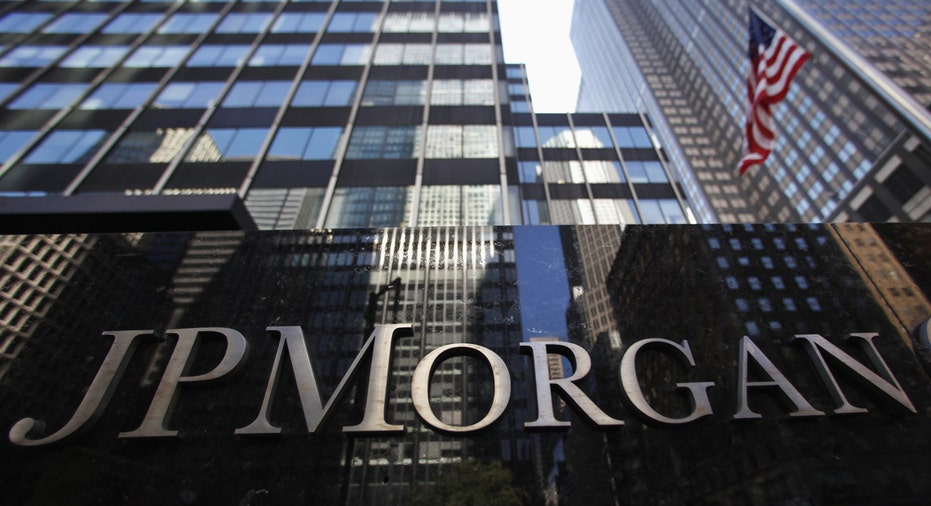J.P. Morgan to Increase Deposit Rates for Some Big Clients

Some bank customers won't have to wait much longer to reap benefits from the Federal Reserve's decision to raise interest rates.
J.P. Morgan Chase & Co. will begin raising deposit rates for some of its biggest clients in January, according to a person familiar with the matter.
The move by J.P. Morgan, the largest U.S. bank by assets, makes it an early mover among its American rivals.
Hours after the Fed's decision earlier this month, the largest U.S. banks announced increases in the prime rate, a reference rate for a variety of loans including credit-card debt. But most banks didn't make any corresponding hikes to the interest they pay to depositors. The moves signaled that at least for now most banks hoped to pocket the gains from the Fed's move.
Net interest margins, or the difference between what banks pay for deposits and what they earn on loans and investments, have been squeezed in recent years by low interest rates.
"They're so compressed there's no question they'll keep the majority if not all of [the benefits of the first rate hike]," said Lance Pan, director of research at Capital Advisors Group Inc., an investment advisory firm.
J.P. Morgan's deposit-rate increase will affect most institutional clients and the size of the increases will vary, the person said. They will apply to "operating" deposits, which are deemed stickier and less likely to be withdrawn in a crisis.
Representatives for Bank of America Corp., Wells Fargo & Co. and Citigroup Inc. said there has been no change to deposit rates at the banks. Representatives for Goldman Sachs Group Inc. and Morgan Stanley had no immediate comment.
The Fed's decision this month to lift its benchmark interest rate by a quarter percentage point marked the end of an era that had pinched banks' lending profits. Lenders anticipate that higher rates will provide an immediate boost to lending income, while also possibly helping loan demand.
In a rising rate environment, deposit-rate increases typically lag behind increases in loan rates, which is why banks can make more money when rates go up. Vining Sparks analyst Marty Mosby estimates that large U.S. banks will raise rates on interest-bearing deposits by less than 0.1 percentage point in the wake of the Fed's move. Meanwhile, the prime lending rate quickly rose to 3.5% from 3.25% after the Fed announcement.
Some uncertainty remains as to how exactly the rate hike will play out in deposit rates this time around, given new regulations that make certain deposits more valuable than others.
Operating deposits are more attractive to banks than so-called excess or "nonoperational" deposits, which are considered riskier. New regulations require that banks hold bigger capital cushions for deposits considered riskier such as noninsured balances held by hedge funds.
Banks in the U.S. have moved aggressively in the past two years to reduce those nonoperational deposits. State Street Corp. earlier this year took the unusual step of charging some clients for large deposits and J.P. Morgan cut that type of deposit by more than $150 billion in 2015.
While most U.S. banks are holding firm on deposit rates, some large Canadian banks have in recent weeks increased deposit rates on U.S. dollar-denominated accounts in Canada.
Toronto-Dominion Bank, Bank of Nova Scotia and Canadian Imperial Bank of Commerce are among the Canadian banks that have increased deposit rates for certain U.S. dollar-denominated corporate accounts, according to representatives for the banks.
Representatives for Royal Bank of Canada and Bank of Montreal declined to comment.
Victor Dodig, chief executive of CIBC, Canada's fifth-largest bank, has spoken publicly about the bank's desire to expand in the U.S. CIBC's business banking clients, which deploy capital in the U.S., often park some deposits with rivals including regional and global U.S. banks.
"There's a very real risk over time that we lose those clients if we can't back them across the border," said Mr. Dodig during CIBC's investor day presentation on Oct. 7.
Canadian lenders are increasingly tapping the U.S. market for growth. Low interest rates and oil prices coupled with a sluggish domestic economy are clouding the outlook for Canada's banks, which generate the bulk of their profits in their home market.
As a result, Canada's biggest banks are seizing more growth opportunities south of the border, including in corporate banking, private banking and wealth management.
By Sarah Krouse, Rita Trichur and Rachel Louise Ensign



















